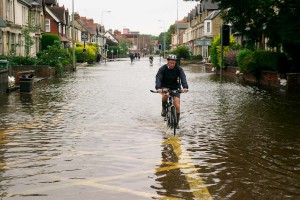19th December 2014 Los Angeles, USA
Connecting through the Internet of Things
By Irina Calos
On my very first day as Los Angeles Science and Innovation Officer, I had the opportunity to attend the 2nd Annual Internet of Things Summit at the National Press Club in Washington, D.C.
The Internet of Things describes an array of products that employ sensors that connect to the internet to provide people with tools to make more intelligent decisions. The breadth and extent of applications that already harness the internet are practically endless, for example, devices monitor and record diabetics’ blood glucose levels, and advise patients and their doctors on their treatment. Sensors placed on trees in the Amazon alert officials to illegal logging. Sensors on the German Autobahn monitor traffic and adjust speed limits to prevent congestion. In San Francisco, parking meters are equipped with sensors that can point drivers to open parking spaces. Cisco reports that within the next decade, the Internet of Things is poised to generate $4.6 trillion in value for the public sector, and $14.4 trillion for the private sector. By 2020, Intel estimates that 31 billion devices and 4 billion people will have access to the internet.
 Preparedness is part of resilience, and the collection of a variety of data enables us to better anticipate risks. Our built environment has become increasingly connected and technology deployment can improve the resiliency of communities faced with natural disasters. In the UK, record-setting storms and floods that hit much of the region in 2013 and 2014 led to the development of the Oxford Flood Network. The nascent network hopes to set up 30 sensors to monitor the rivers Thames and Cherwell, as well as groundwater levels around Oxford and the rivers’ floodplain.
Preparedness is part of resilience, and the collection of a variety of data enables us to better anticipate risks. Our built environment has become increasingly connected and technology deployment can improve the resiliency of communities faced with natural disasters. In the UK, record-setting storms and floods that hit much of the region in 2013 and 2014 led to the development of the Oxford Flood Network. The nascent network hopes to set up 30 sensors to monitor the rivers Thames and Cherwell, as well as groundwater levels around Oxford and the rivers’ floodplain.
The Oxford Flood Network is interesting not only because it addresses many of thematic areas of Government Office for Science’s—Innovation and Infrastructre, Data and Analytics, and Risk and Resilience—but because it also uses innovative methods to notify stakeholders of life-threatening situations. Furthermore, the Network, and so much of the Internet of Things, fosters cooperation between government and civil society. The intention is to create crowd-sourced maps and notification systems by using open source sensors that employ ultrasound to measure water levels. Realtime data is then transmitted through unutilized TV whitespace spectrum, the space between TV channels.
The Internet of Things is also being deployed in Self-Monitoring Analysis and Technology, or SMART solutions in infrastructure such as bridges, dams, buildings, and roads to increase efficiency and reduce the risk of failure. Sensors to monitor movement, tilt, sound, temperature, and pressure can be used to presage, say, a bridge collapse before human inspectors are able to take measurements. This is of vital importance in the wake of floods, which wash out roads, or earthquakes, which damage bridges, buildings, and dams.
Once data is collected, it can be used in ways that might not have been devised yet. For instance, at the Summit, Los Angeles’ new Chief Innovation Officer, Peter Marx mentioned that the city has 14,000 proprietary apps, but that unlocking the value inherent in all of this data is key.
There are significant challenges that remain for people to develop the Internet of Things, but several forces are working in our favor:
- First, sensors are getting smaller and cheaper. The more that are made, the cheaper they get.
- With faster mobile networks such as 4G, new high-bandwidth applications may be developed. Concurrently, as network coverage increases, more people are able to benefit from the Internet of Things.
- Advanced analytics and cloud computing enables more people to manage and understand data gleaned from a more connected world.
The UK is funding Catapult Centers that partner with business to commercialize new technologies and through the Future Cities and Transport Systems Catapults is providing opportunities for collaboration on demonstration projects such as Sensing London and Connected Digital Streets. On October 27, the Future Cities Catapult and the British Standards Institute launched the Future Cities Standards Institute to harmonize regulations within the UK brainstorm areas where standards will help grow the market for future city solutions. We anticipate that these developments will help other localities benefit from these projects.
On December 18, Sir Mark Walport, the UK Government’s Chief Scientific Adviser released his report on the Internet of Things. The report includes examples of how the government is using the Internet of Things to improve infrastructure and public health; it also provides recommendations for government to maximize opportunities emanating from these new technologies. This is an important area of work for the UK and we look forward to highlighting the innovative ways that technology is used to change the way we live.